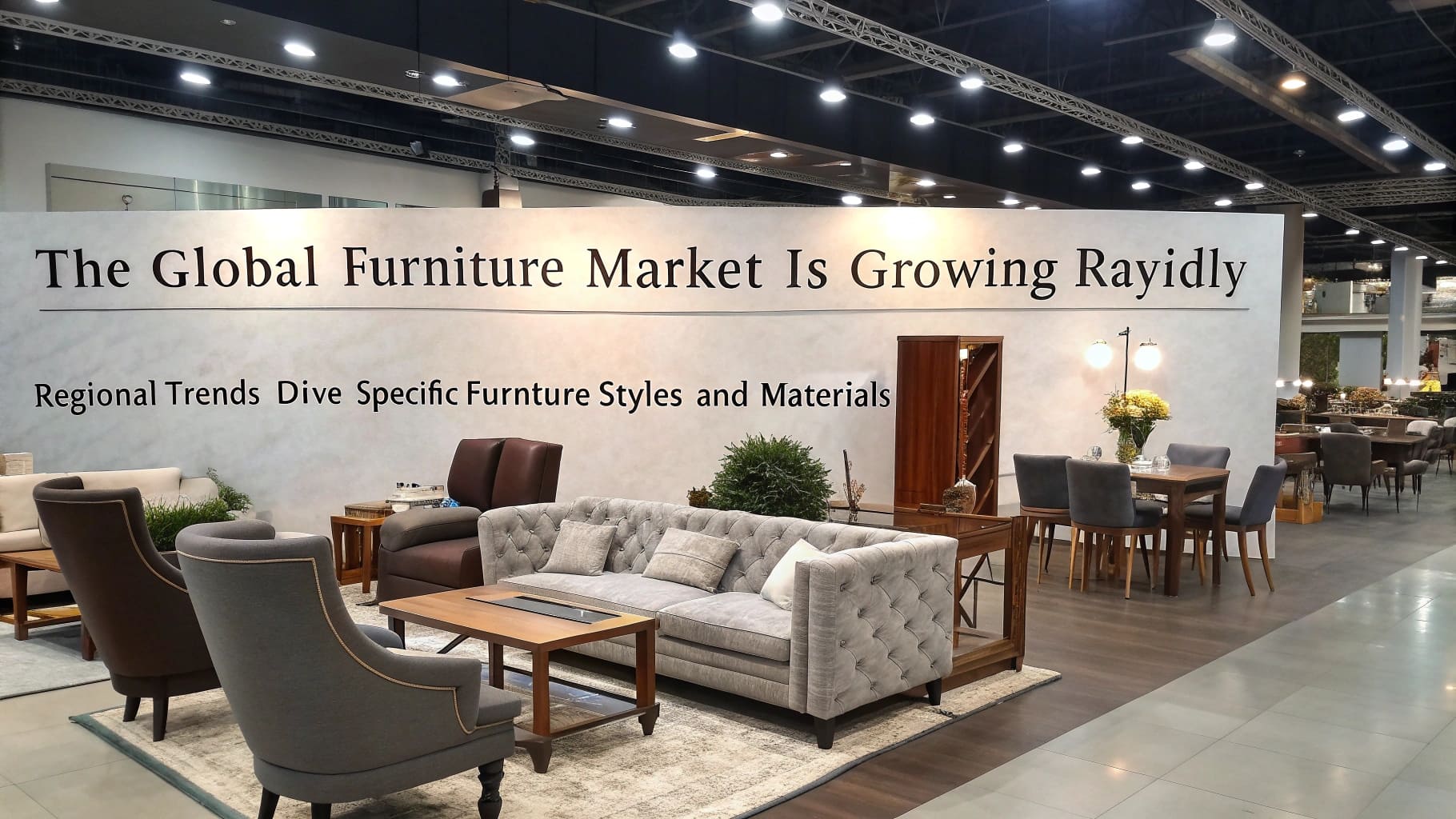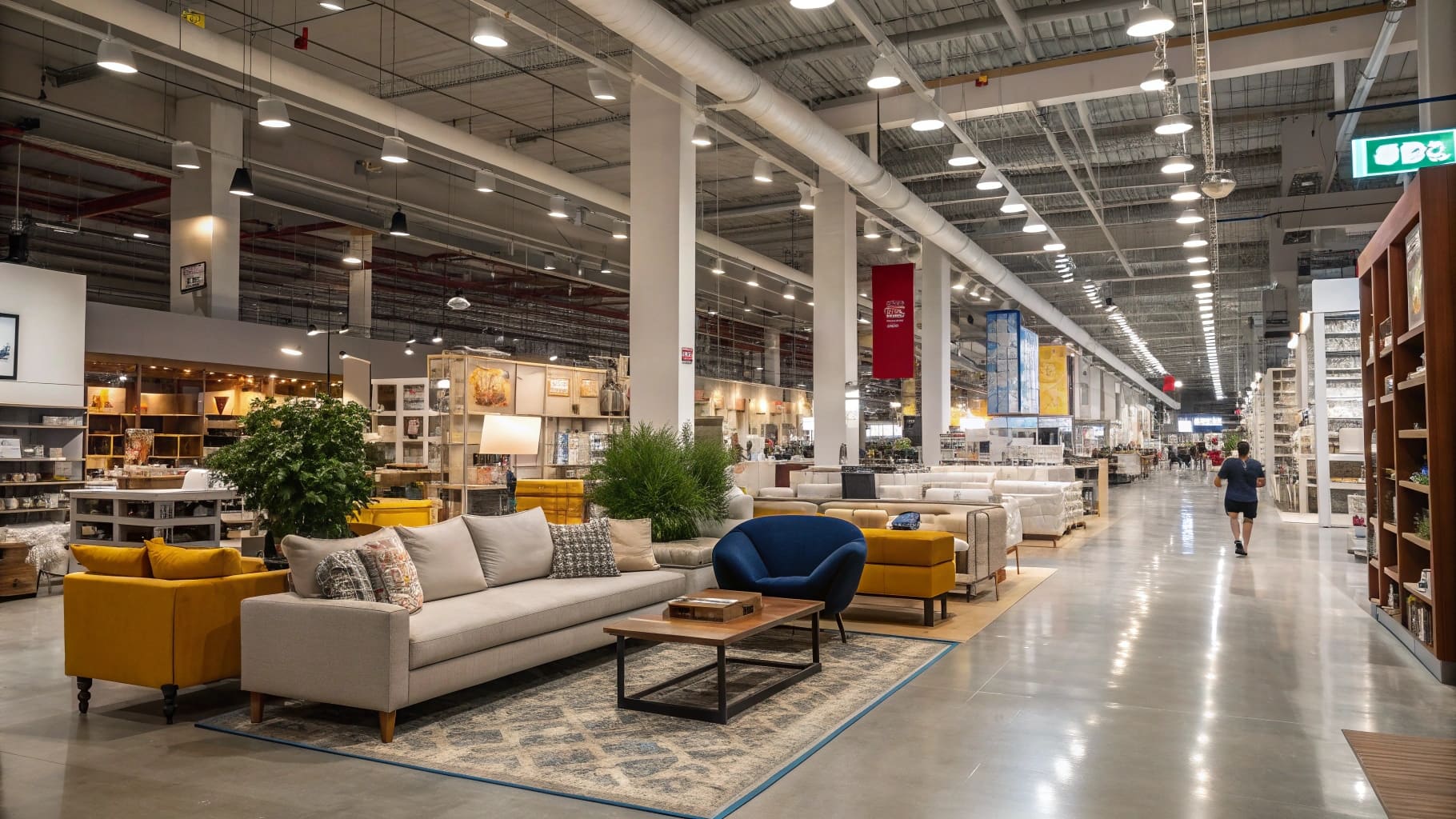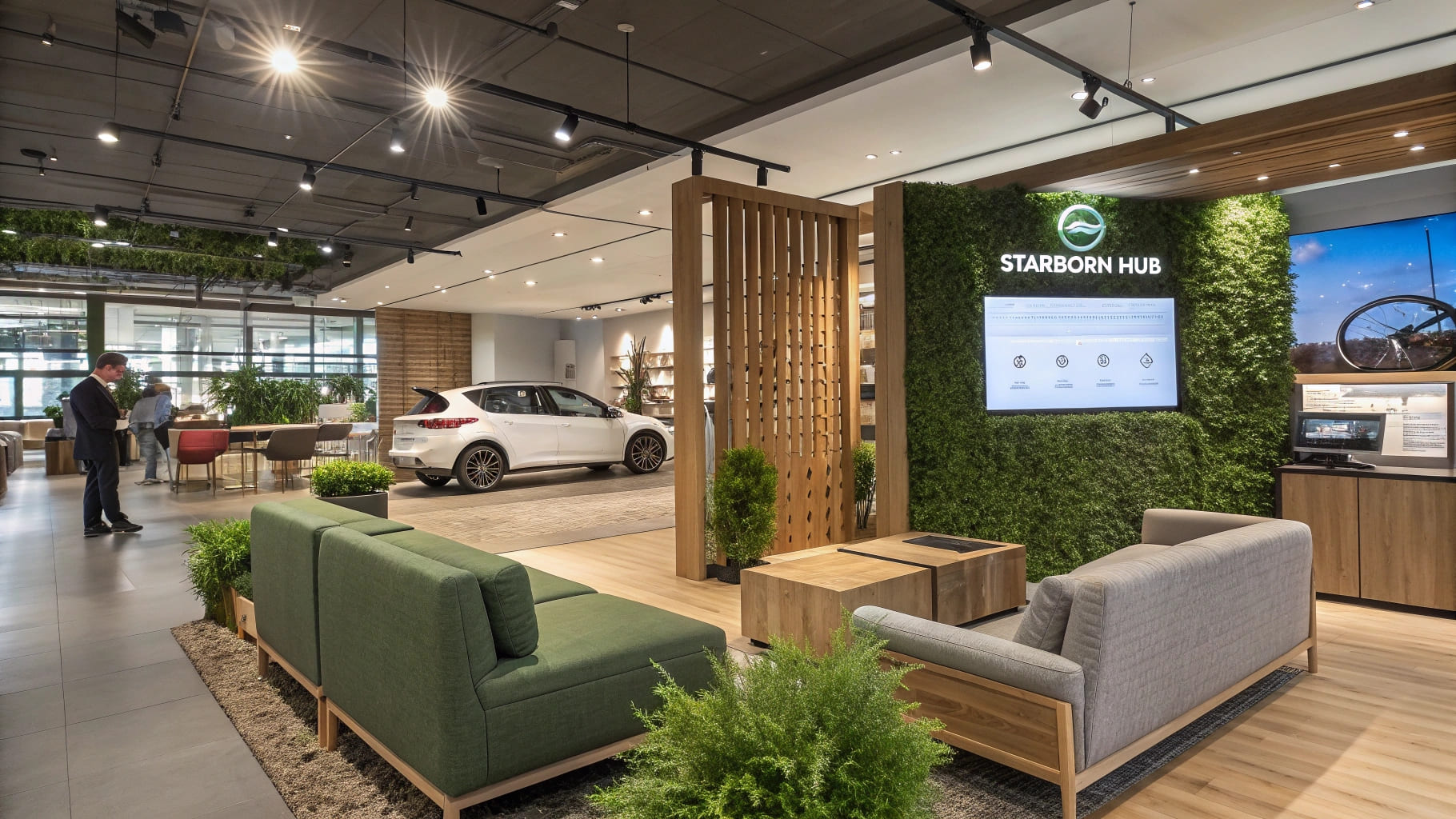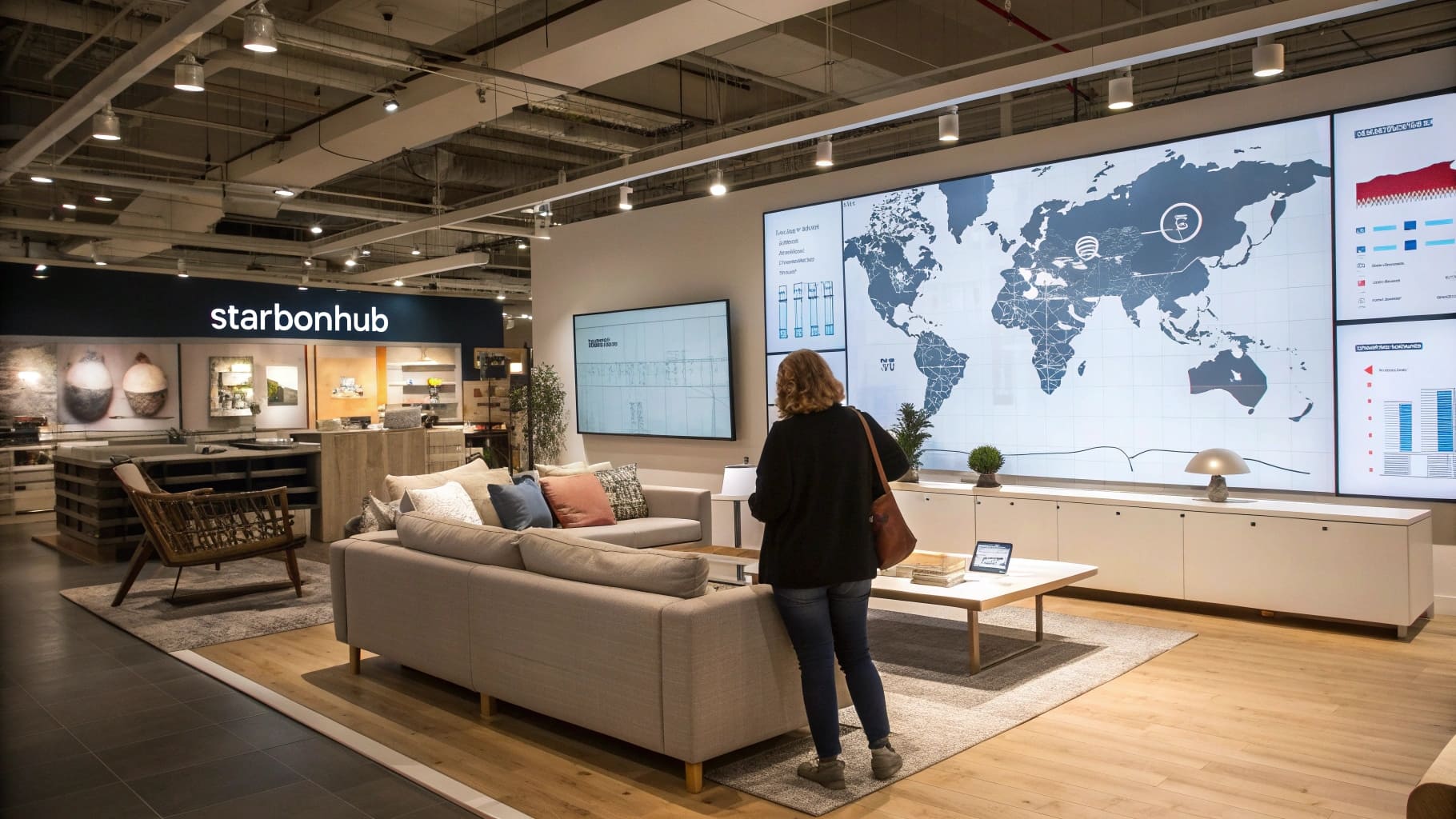Understanding the furniture market is more complex than simply tracking sales. Today’s market is evolving, and for independent retailers, staying ahead is key to success.
To fully grasp the dynamics of the furniture market, retailers must navigate through consumer behavior, regional preferences, and emerging trends. Starbornhub's platform offers valuable insights, minimizing risks for independent retailers by connecting them directly with the right products for their specific markets.

As the global furniture market grows and changes, it becomes crucial to tailor offerings based on local demands. Here’s a closer look at how you can understand the market better and make more informed decisions.
Introduction
The furniture market is not a one-size-fits-all industry. Different regions, cultures, and consumer preferences influence the demand for specific products. Independent retailers, especially those selling luxury furniture1, need a unique approach to navigating this market.
By understanding the key factors driving the furniture market—such as local tastes, demographics, and economic conditions—retailers can offer the right products that align with consumer expectations and regional demand.

The furniture market spans various categories, from residential to office and outdoor furniture. However, for independent retailers selling luxury furniture1, understanding local nuances is crucial. For example, consumer preferences for furniture vary widely depending on geographic regions. In Europe, Scandinavian designs with minimalist aesthetics may dominate, while in the Middle East, opulent, ornate designs could be more popular. Without a clear understanding of these local preferences, independent retailers may end up with stock that doesn't meet market needs.
This is where the platform like Starbornhub becomes invaluable. By linking designers, retailers, and consumers in a collaborative environment, it allows for real-time input from end users, reducing the guesswork. Retailers no longer need to rely solely on experience to determine what will sell. With data-backed insights, they can see which products align with the local market demand.
Starbornhub allows retailers to connect with local designers and consumers to co-create products tailored to regional tastes. By integrating this into their business model, retailers can cut down on risky inventory investments and align their product offerings with what their target market truly wants.
Overview of the Furniture Market
The furniture market is dynamic, and understanding its size, growth, and segments is essential. However, focusing on regional specifics is just as critical, especially when selling luxury furniture1.
The global furniture market is growing rapidly, but local market insights are needed to ensure retailers stock the right products. With consumer demands shifting, regional trends often drive the need for specific furniture styles and materials.

The furniture market can be divided into various segments: residential, office, and outdoor furniture. Within these categories, the demand for luxury furniture1 can fluctuate based on local economic conditions and cultural preferences. For instance, in highly urbanized areas where space is limited, demand for multifunctional furniture is on the rise. Conversely, in suburban or rural areas, larger, more traditional pieces might still dominate.
Moreover, factors like material choice can influence purchasing behavior. In regions with a strong focus on sustainability2, eco-friendly materials are preferred. In more affluent areas, the desire for high-end, custom-made furniture often leads to a demand for luxurious materials such as leather, velvet, or rare woods.
Starbornhub’s model is designed to help independent retailers navigate these complexities. By directly involving local consumers in the decision-making process, retailers can better predict trends and meet specific regional demands. This reduces the guesswork involved in sourcing and inventory management, enabling retailers to offer products that truly resonate with their customers.
Key Players in the Furniture Market
While global giants like IKEA and Ashley Furniture dominate the market, independent retailers have their own unique challenges. They need to stay competitive and ensure they’re offering the products that their customers want, without unnecessary risk.
While major brands set the tone for global trends, independent retailers must adapt to local market demands. Starbornhub’s platform connects retailers with the right products based on their unique customer base.

For independent retailers, competing with larger brands isn’t just about price—it’s about offering unique products that cater to specific tastes. The key challenge is how to predict what will resonate with their local market. Major players like IKEA have the advantage of large-scale production and universal designs, but smaller retailers can differentiate by offering luxury, exclusivity, and bespoke designs.
That’s where Starbornhub steps in. By allowing retailers to directly collaborate with designers and receive feedback from local consumers, the platform enables retailers to stock the right products with greater confidence. This reduces the reliance on market assumptions and aligns offerings with what people in their region truly want.
Starbornhub’s unique business model helps retailers avoid the risks of stocking products that don’t match local demand. Through the platform, retailers can access a diverse range of designs that are more likely to succeed in their specific market. Whether it’s high-end custom sofas or elegant armchairs, retailers can ensure they’re meeting local needs with data-driven insights.
Trends Shaping the Furniture Market
The furniture market is being shaped by several trends, from sustainability2 to the integration of smart technology. Independent retailers need to stay ahead of these trends to maintain relevance in an increasingly competitive market.
From eco-friendly materials to smart furniture and e-commerce growth, retailers must understand how these trends influence consumer behavior3. Starbornhub helps independent retailers keep up by providing access to the latest trends and customer insights.

Key trends, such as sustainability2 and smart furniture, are transforming the furniture market. Consumers are increasingly looking for furniture that aligns with their values, especially when it comes to environmental sustainability2. This trend is influencing design decisions, with an emphasis on materials that are eco-friendly, such as recycled plastics, bamboo, and sustainably sourced wood.
Additionally, the rise of smart furniture, which integrates technology like IoT or wireless charging, is appealing to a younger, tech-savvy demographic. For independent retailers, keeping up with these trends can be challenging, as it requires them to predict not only design preferences but also technological advancements.
Starbornhub’s platform helps retailers address these challenges by offering a wide range of designs that cater to these emerging trends. Retailers can see what products are gaining traction and adapt their stock accordingly. By staying ahead of these trends, they can ensure they are offering products that resonate with today’s conscious consumers.
Factors Influencing Consumer Behavior
Consumer behavior is influenced by many factors, from demographics to economic conditions. Independent retailers need to understand these dynamics to offer the right products at the right time.
Understanding local consumer behavior3 is key to stocking the right products. Starbornhub provides valuable data and insights that help retailers align their offerings with local purchasing trends and preferences.

Demographics play a significant role in shaping consumer behavior3. In urban areas, for example, young professionals may prefer sleek, space-saving furniture that fits smaller apartments. Meanwhile, in suburban or rural areas, larger, traditional furniture may be preferred due to more living space.
Economic factors also influence purchasing behavior. In times of economic downturn, consumers may gravitate towards more affordable furniture, while in more prosperous periods, luxury furniture1 may see a rise in demand. Additionally, cultural influences can shape preferences. For example, some regions prioritize minimalist designs, while others may favor ornate, detailed pieces.
Starbornhub’s platform is built to help independent retailers understand these regional dynamics. By providing insights from local consumers and designers, the platform helps retailers predict purchasing patterns and stock the products that are most likely to succeed in their market.
Conclusion
Retailers who want to succeed in today’s competitive furniture market must understand the unique needs and preferences of their local customers. Starbornhub’s platform enables retailers to make data-driven decisions and offer the right products, reducing risks and maximizing success.
-
Explore this link to understand the latest trends and consumer preferences in the luxury furniture market, helping retailers make informed decisions. ↩ ↩ ↩ ↩ ↩
-
Discover how sustainability is shaping consumer choices in the furniture industry, which is crucial for retailers to align their offerings. ↩ ↩ ↩ ↩
-
Learn about the key factors affecting consumer behavior in furniture purchasing, essential for retailers to tailor their products effectively. ↩ ↩ ↩

